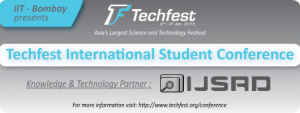IJSRD found Good research work on Mechanical
research area.
Abstract— Combining a high strength fibre with a polymeric
matrix produces a composite material with higher stiffness
and strength. There are many techniques to produce
composite materials, among which few techniques are
discussed here based on its process, capabilities and
application of composite parts. Among which hand lay-up,
vacuum infusion, resin transfer molding and sheet molding
compound are widely used. The prepreg is widely used for
manufacturing composite parts.
Key words: Fibreglass Cloth, Fibre Reinforced Composites,
Prepreg, Vacuum Infusion, Sheet Molding Compound
Introduction
The global nature of today’s reinforced plastics industry
creates a demand from all over the world. To produce a
composite item, two basic components are required, these
being a synthetic resin and a strong fibre [1]. The resin,
which can be in the form of a polyester, epoxy or vinyl
ester, is normally supplied as a viscous liquid, which sets to
a hard solid when suitably activated [1]. The fibre may be
glass, carbon, or a combination of some or all of these. What
makes composites unique is the fact that the material of
construction and the end product are produced
simultaneously. Using a suitable mould, layers of fibre are
impregnated with activated resin until the required thickness
is achieved [1]. After completion, the mould is removed,
which further can be used to produce more no. of identical
items. These products are FRP cylinders, FRP sheets, FRP
components for Transformers, and switchgears products. In
the manufacturing of the Fibreglass epoxy sheets are more
difficult tasks as it has many intermediate processes to
manufactured sheets. The sheets are the combination of the
fibreglass cloth and resin matrix that bond with the
fibreglass cloth to make highly strength composites. Glass
fibres fall into two categories: low-cost general-purpose
fibres and premium special-purpose fibres. Over 90 % of all
glass fibres are general- purpose products. These fibres are
known by the designation E-glass. The remaining glass
fibres are premium special-purpose products [2]. Specialpurpose
fibres, which are of commercial significance in the
market today, include glass fibres with high corrosion
resistance (ECR-glass), high strength (S-, R-, and T Eglass),
with low dielectric constants (D-glass), high-strength
fibres, and pure silica or quartz fibres, which can be used at
ultrahigh temperatures[2].

Fig. Schematic Illustration of the Vacuum Enhanced
Resin Infusion Technology (Verity)
Vacuum Infusion:
The most popular term to describe vacuum infusion
processes are Vacuum Assisted Resin Transfer Moulding
(VARTM), Vacuum Assisted Resin Infusion Moulding
(VARIM) etc, basically the same technology, and describe
methods based on the impregnation of dry reinforcement by
liquid thermoset resin driven under vacuum, and this
technique made to reduce the void content inside the molded
composites. With vacuum bag moulding, the bags are used
to evacuate the air from laminate and to generate the
atmospheric pressure required for compaction over the mold
[7]. Infusion processes are plagued by limitations such as
lower fibre volume fraction, lack of uniform resin
distribution, higher porosity, control on thickness of part,
clogging of resin and vacuum feed lines. CSIR-NAL has
developed a proprietary infusion process called VERITy
(Vacuum Enhanced Resin Infusion Technology), Kundan et
al. (2013), to overcome the above limitations. The process is
designed in such a way that it is scalable from a laminate
level to a complex cocured primary structure like the wing
of a transport aircraft. A schematic of the VERITy process is
shown in Fig
http://ijsrdcallforpaper.blogspot.in/
http://www.ijsrd.com
http://www.facebook.com/ijsrd
 Techfest International Student Conference is an initiative to bring together the student community and professors with a common research background. TISC marks a step further in our endeavor to promote science and technology among the students by facilitating the exchange of knowledge between academia and industry.
Techfest International Student Conference is an initiative to bring together the student community and professors with a common research background. TISC marks a step further in our endeavor to promote science and technology among the students by facilitating the exchange of knowledge between academia and industry. Techfest International Student Conference presents a unique opportunity for students to present their work in front of fellow students, senior professors from top universities, industrialists and policy-makers. It aims at giving recognition to students for their research at a relatively young age. An enriching experience to research oriented minds, TISC will give young scientists an insight into the topic, learn new ideas and build networks beneficial for the future.
Techfest International Student Conference presents a unique opportunity for students to present their work in front of fellow students, senior professors from top universities, industrialists and policy-makers. It aims at giving recognition to students for their research at a relatively young age. An enriching experience to research oriented minds, TISC will give young scientists an insight into the topic, learn new ideas and build networks beneficial for the future.